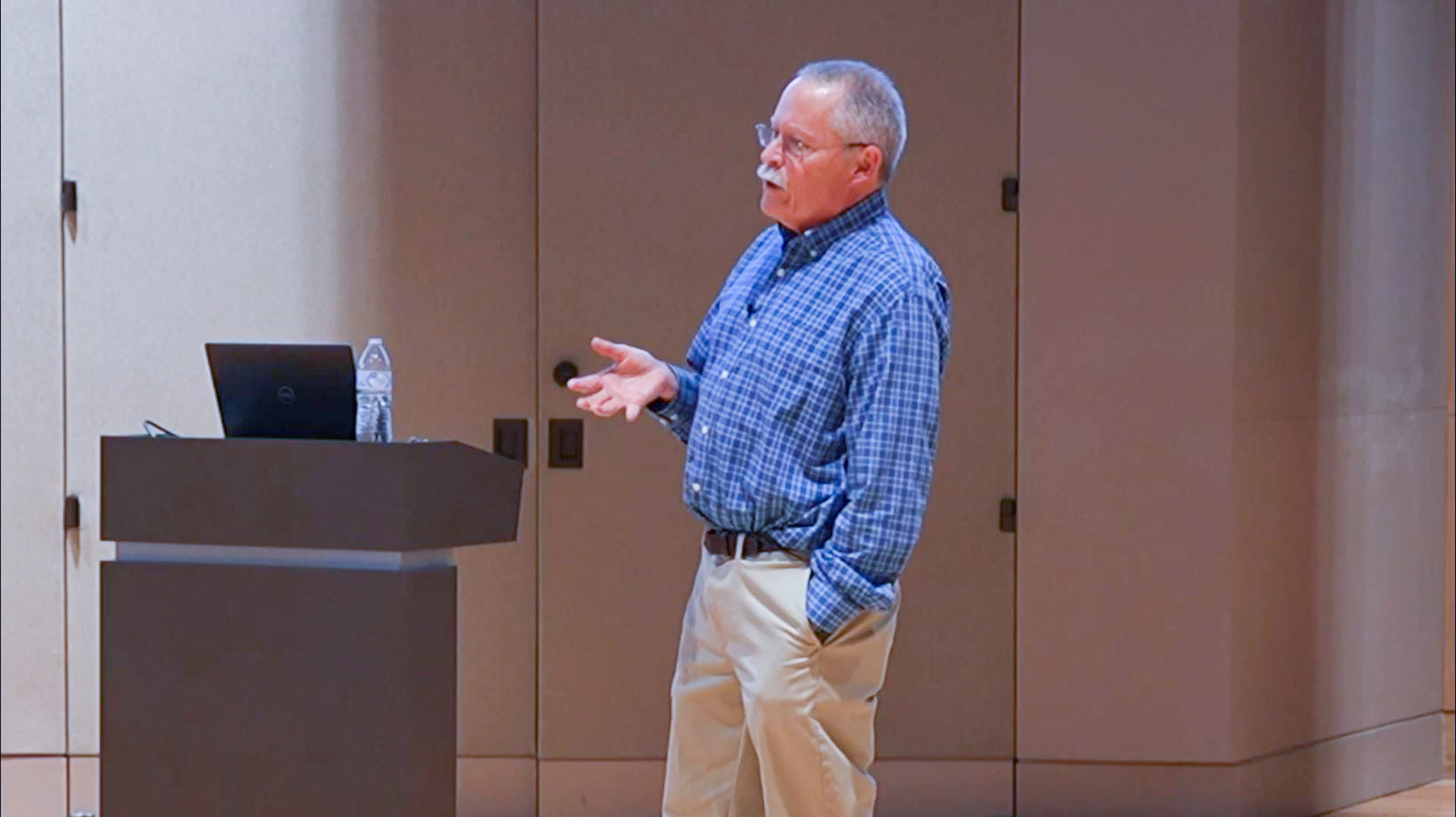Campus News
December 17th, 2024
Bolton explores 'America in miniature'
from a geological perspective for JCLS
Maryland's geological and topographic variances are quite dramatic

David Bolton was the Joan Crawford Lecture Series (JCLS) presenter for December.
Maryland's geological and topographic variances are quite dramatic

David Bolton was the Joan Crawford Lecture Series (JCLS) presenter for December.
David Bolton said Maryland is often called "America in miniature" for a good reason.
"There are so many varied geologic and topographic terrains here," Bolton told a Joan Crawford Lecture Series audience at Garrett College on December 4th. "There's probably more interesting land forms in as small a space in Maryland as in any state in the U.S."
As part of his presentation, Bolton did a quick recap on just how different the various areas of Maryland are in terms of rock and earth.
"The Maryland Coastal Plain in the East is comprised of unconsolidated sands, gravels, silts and clays," said Bolton. "These are the youngest rocks in the state. In Ocean City, you could start digging and go a mile-and-a-half until you hit bedrock."
That changes quickly, according to Bolton, as you move across the state into the Maryland Piedmont/Blue Ridge region.
"That region features a lot of igneous and metamorphic rocks, remnants of old land masses and continental movements," said Bolton, who also noted that region provided building stones for a lot of early Washington, D.C. buildings, including the Washington Monument and Lincoln Memorial.
By the time you reach the Appalachian Plateau, said Bolton, there are a lot of "folded and faulted sedimentary rocks generated by continental collisions." He estimated the rocks of this region, which go back to the Ordovician-to-Permian ages, are anywhere from one-quarter to one-half billion years old.
The geological background of the region can have broader impact than one might think, according to Bolton – water quality being just one example.
"A lot of wells in this area have high levels of iron and manganese," said Bolton. "It's an aesthetical consideration – it's not a health issue.
"About a quarter of [local] wells have high sodium concentrations," he added. "That's often associated with their proximity to roads that have received a lot of road salt."
Potentially more serious are high levels of arsenic – "a nasty substance," commented Bolton.
Bolton illustrated just how long the 4.6-billion-year history of earth is with an interesting comparison.
"If you compressed the Earth's geological timeline into one year, you get a sense of when historical events occurred," he said.
"If the Earth forms on January 1, you wouldn't see anything in the way of life until almost four months later – and that would be very simple, single-cell life," Bolton said. "You'd see the first very large explosion of life on November 19th – but it wouldn't be until November 23rd until life appears on land.
"It would be late November or early December until Garrett County rocks formed," continued Bolton. "Dinosaurs would appear around mid-December and humans in their current form would appear around 11:40 p.m. on December 31st."
Notes: The Joan Crawford Lecture Series honors dynamic educator Joan R. Crawford, who died in 2010 after serving the Garrett College community for 30 years in a variety of faculty and staff roles. JCLS presentations are offered free of charge, and the public and community members are invited to attend.
For more information, contact Stephanie Miller at stephanie.miller@garrettcollege.edu.






